Cooking for Others: A Guide to Giving Sympathy Meals
Our recent Q&A on sympathy meals received a tremendous response. Thank you to all who took the time to share your experiences with either giving or receiving meals. It was very, very interesting to read your comments and I took note of all the questions. I hope to answer them in this follow-up post.
We agreed that there are people in need all around us, and a small gesture like giving a meal can be a blessing both to giver and receiver. In fact, by the sounds of things, lives were very nearly saved just because a meal -or series of meals- was received during a time of need.
It was interesting that many more readers had given a meal than accepted one. Those who had been recipients spoke passionately about how touched they were and how helpful it was to be given a practical gift, in lieu of flowers. And there was another theme – the food that was brought is the best, or very near to the best, food that they had ever eaten. I’d have to agree with that one, too.
Plenty of questions also arose, all of them extremely pertinent. When is the best time to deliver a meal? What about allergies? Should a casserole be pre-baked or not? Hot or cold? Frozen or fresh?
This post will highlight the best tips, helpful suggestions, and friendly advice on bringing meals to others. Hopefully you will be encouraged to look around and reach out to people in your community through a hot meal.
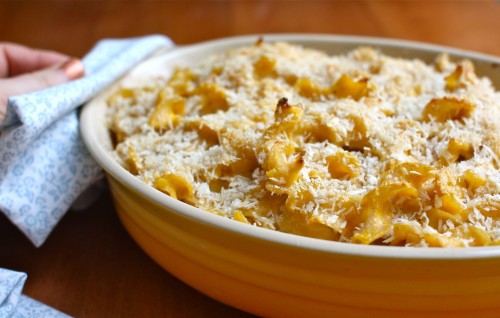
Make it a Main Meal
What is best to bring a family dealing with illness? A girlfriend on bedrest? The couple that moved in next door? Well, cookies, muffins and other treats are all wonderful, but in most situations, what are really needed are nourishing main meals, especially if there are children in the family. Snacks can only go so far; a hearty stew, a comforting lasagna – these are the dishes that will benefit your recipient the most.
TIP 1: If you don’t enjoy cooking or think you won’t have the time, drop off a bag of groceries instead with some ready-to-eat foods such as bread & cheese, cut vegetables and fruit, or perhaps a nice meat pie from your favorite bakery.
TIP 2: Consider a dinner invitation to your home, instead of bringing over a meal. Perhaps good company and a break from the house is what some folks really need.
Get the recipe for Quebec Pork Pie
Practical advice for making & delivering meals
When I know of a family or individual who could benefit from a home cooked meal there is a natural progression of steps that I usually take to bring them food. Each home situation is unique, and my relationship with the person varies, so these are not hard and fast rules, but more suggestions to consider.
Communicating
If I feel the family can be disturbed, I’ll call directly to communicate about meals. If I don’t want to bother them, I’ll speak to a close friend or relative.
- First I let them know that food is on the way. I don’t give them an option, because many times people will protest that they don’t need it, even if they do. (We’ll talk about rejection below.)
- I inquire about allergies, strong aversions and special diets (especially if a family member is sick, or the mother is breastfeeding).
- I ask about timing. When will they be home? Will they eat the meal that night? Freeze it?
Cooking
It’s important to put some thought into what you bring, but don’t stress over it. Take note of what has been communicated from the family as you plan your dish.
Here are several more guidelines to consider:
- avoid common or serious allergens (never peanuts, for example) and foods people have strong opinions about (such as olives, fish)
- pack it in containers that don’t need to be returned, and be sure to note that you don’t need them back
- make large servings of at least one thing that freezes well, in case they already have more than enough and want to save something for later
- include a detailed menu that lists ingredients (again, a nod to dietary issues) and explains how to reheat and how to store extras, if necessary
- include enough that would satisfy a somewhat fussy kid so the family hopefully won’t need to prepare something else for wee ones
- focus on fresh, healthy food with a modest sweet for dessert. I know some friends have felt inundated with cakes and pies!
Lastly, specific directions on how to heat and serve the meal are essential!
Caring
Just like any act of service, there are always small ways to show you care. Here are a few.
- Call ahead to let them know you are coming, then leave the food on the step. Folks may not necessarily wish you to come in a chat (and see their temporarily chaotic home). Be sensitive to that.
- Skip the flowers and desserts and offer babysitting services instead. A note with an offer to babysit or take the kids overnight can be a priceless gift.
- Reader Alissa says: “I also try to include a couple “extras” – jar of apple sauce, gallon of milk, boxed mac n’ cheese, box of crackers – to help stock the pantry/fridge.” It’s the small things that make the impact.
What are the best meals to bring?
Ideally, sympathy meals are:
- easy to transport
- easy to eat
- hold well
- freeze well
By hold well, I mean they can sit a day or two in the refrigerator without getting soggy, drying out or turning into something altogether nasty. They should require little to no assembly, shouldn’t be overly complicated to eat (think, one-handed breastfeeding mama), and at the very least, need to survive the trip over.
Types of suitable dishes include:
Soups & Stews: Chili of all types, hot nourishing soups, hearty stews and chowders.
Crockpot/Slowcooker meals: Spaghetti sauce, Pulled pork (accompanied with slaw, and buns), butter chicken, chicken curry.
Savory Pies: Quebec meat pie, Chicken Pot Pie, Quiche, Steak Pie.
Casseroles: Lasagna, Macaroni & cheese, Tuna noodle casserole, Shepherd’s pie – turkey, beef or vegetarian…
Sauced Meals: Chicken Parmesan, Meatballs & Sauce, Ribs, Meatloaf…
**Be sure to check out my recipe round-up: Weekend Links Cooking for Others Edition.**
Websites to help you cook for others
- Food Tidings – A place to manage meals for your family & friends in need
- Meal Train – The best, in my opinion!.
- Take Them A Meal – A free online tool for coordinating the delivery of meals to someone in need.
- MealBaby – Meal registry made easy.
A Note about Rejection
Don’t be discouraged if your meal is occasionally turned down, nit-picked, or unappreciated. You have done your part in expressing love and caring.
For whatever reason, some acts of kindness are not well received. Perhaps some folks have trouble accepting help.
On the flip side, please don’t ever refuse a meal! Accept it graciously, even if for some reason you can’t eat it. Accept the hug and the smile that comes with it, and appreciate that someone is thinking of you.
Still have questions? Leave them in the comments and we’ll discuss.



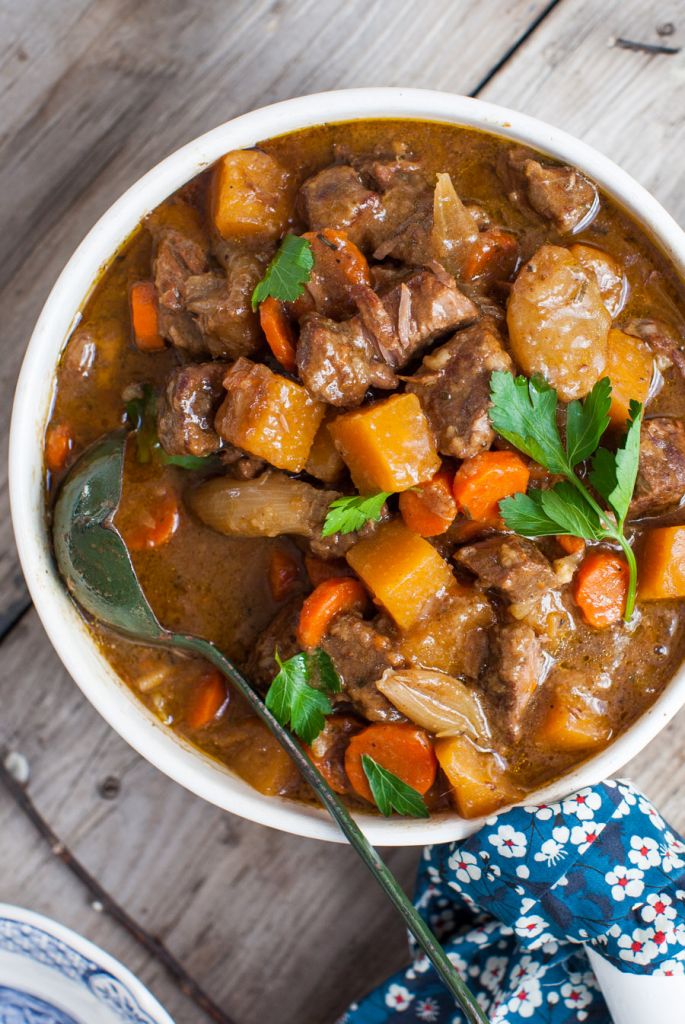
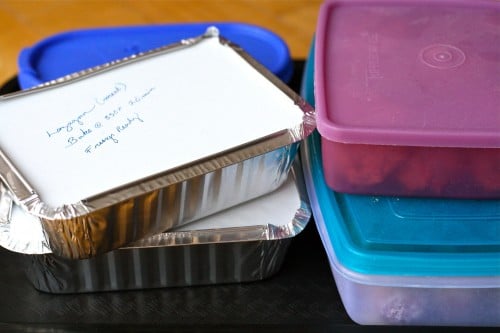
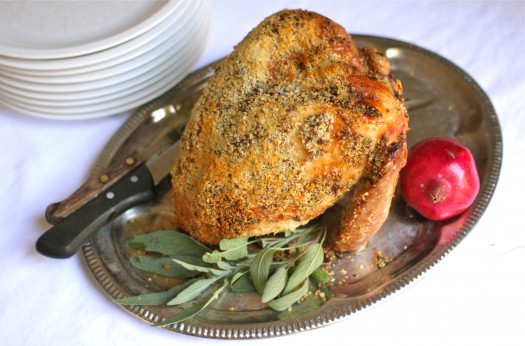
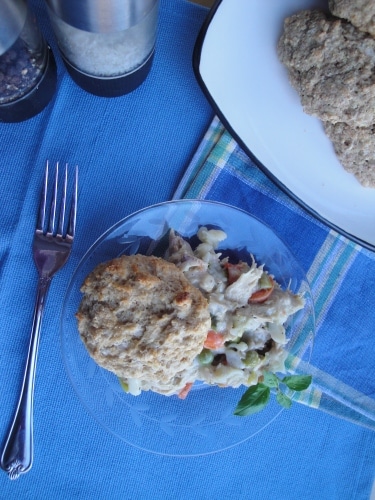

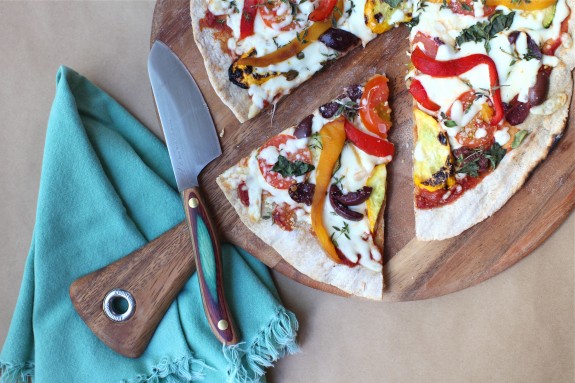


What a great post! I just found this on Pinterest. Aside from the helpful notes that lasagna seems to be overdone, I too am disappointed by the (thankfully few) negative posts. If I ever did receive a meal I didn’t like, I would NEVER EVER let the giver know. Anyway, great post and thanks Diane for the link to takethemameal.com – great site!
I wanted to add a few recipe ideas: ham, potato, and corn chowder; banana bread (thick slices freeze well too); beefaroni (freezes well); green bean casserole; sweet potato casserole with a pecan/oatmeal topping (freezes well too);
Hope this list helps others!
Great ideas! Do you have any recipes you could share? Thank you! 🙂
I’d like to add something that was very helpful to us when we had our daughter. One couple included paper plates, napkins , plastic wear, dressing for salad(included), and cinnamon rolls for morning. That’s also something to take into consideration if family is visiting.
would it be proper to take frozen steaks to someone after a funeral for cooking later???
Absolutely
Not inappropriate, but things that can be consumed immediately are so much more needed!
When I was a child and my family was receiving sympathy meals with the passing of my father, we got so inundated with groceries from friends and neighbors within the first few days. Many items needed to be put in the freezer. We ran out of freezer space and had to ask several neighbors if we could borrow space in theirs. Even our refrigerator was bursting at the seems. The recipients refrigerator and freezer space is something to consider when providing items.
Home-cooked meals were appreciated, as my mother was not up to cooking, but nonperishable items would have been good too, as well as snacks, items that could have gone in the pantry.
My experience was long before the internet, thus no online meal train programs. An organized meal schedule would have been more practical.
But you accepted the meals. Mine was rejected and it hurts.
Once after one of my babies was born a group of ladies called me in the morning to tell me they were bringing dinner, so I didn’t prepare anything. Five minutes before they were to come I get another call telling they had had hectic days and were unable to bring over the dinner! There I sat with nothing for dinner and had to scramble to find something to feed my family. It would have been better to order a pizza or some other take out than what they did to me.
Dear Aimee, it’s now 2017, so your article is one of those that gets a lot of follow-up. I’ve fixed food for several bereaved families and now am doing it for some in-laws and they have noticeably appreciated several things, so I thought I’d mention them here.
First, apart from the fact that cooking is a challenge with so many things happening, there is also the reality that this is a VERY expensive time for those who are having family stay with them. Anything that can help avoid trips to the grocery store can help a family avoid the extra stress of going into debt, just to feed people. Because of that, the advice to bring toilet tissue, paper towels, plastic and foil-wrap and food containers, is right on target. Coffee is another expensive item.
Several years ago I was able to give some cash to a woman who had several people staying with her and, with tears in her eyes, she thanked me for it. She said she had maxed out her credit cards just for funeral expenses and barely had money for fuel. As a result, if I can afford it, I give an envelope with some cash in it to almost every bereaved family I’m involved with.
I also often take some Rolaids, Bath and Body Works room spray and Cascade Platinum dishwasher tabs. (If the giver can afford it, it’s nice to get special brands, but anything is appreciated.)
In this recent situation, I took the first day’s items in cardboard office storage boxes and the family has used them as extra food storage in their small kitchen and dining area.
I’ve found that fast food or take-out restaurant food is often considered a treat–especially things like Chipotle, Chick-Fil-A, Panda Express, and good quality breakfast burritos. Food from Taco-Bell and hamburger fast-food, doesn’t reheat well and is often too spicy for people who are already not feeling good. The other advantage of restaurant food is that there is a comfort factor not found with eating food prepared by someone you don’t know well. It’s also much easier for the giver, if time is limited.
I recently gave a family gift cards to a pizza restaurant and they later told me it was very appreciated, because several kinds could be ordered and delivered.
I have purchased children’s meals at Chick-Fil-A and also made my own with things like ham and cheese sandwiches, cream-cheese celery sticks, grapes and a cookie. Children really seem to appreciate their own special meals.
The bottom line is that people who take food or other items to bereaved families usually just want to do a good thing and I think that feeling shines through. Once you’ve lived through it yourself, you know how much it means to people.
I LOVE all your extra ideas. I have taken tableware, flowers, cards with restaurant cards in them as well as frozen meals.
The “kids meal” is brilliant and I am going to try that. The coffee is something I had not thought of.
Thank you for all your ideas and heart of Giving.
KimJ (OH, WA)
I fell and broke my right foot and tore my left knee. My husband worked long hours and at the time I had a four and a six year old. Two good friends cooked on and off for us a couple of days a week for 6 weeks. A home-cooked meal was a very welcome break from Chinese and pizza delivery! I have continued to pay that experience forward. If someone I know breaks something, or is very sick, or is going through a bereavement, I usually make three days’ worth of meals to drop off – all in recycled take-out containers so they can just throw them out and don’t need to bother with bringing them back. I think a meal delivery under these circumstances shows you care and more often than not is most gratefully appreciated 🙂
Many times, relatives are expected from out of town, or just adult children will be spending lots of time at “home” during this period. Several times I have filled a reusable grocery bag with everything needed for a few days worth of breakfasts: coffee, half-and-half, fruit,bagels, cream cheese, eggs, a package of bacon or sausage, OJ, pastries, etc. It’s something most folks haven’t even thought about and really seem to appreciate!
I skimmed this and maybe I missed it…but I’m making baked penne and I’m not sure if I should bake it first or not?
I set up a meal train for a fellow soccer mom who had a large ovarian tumor removed to last 2 weeks and only two people (other than myself) signed up. I feel like I kind of talked her into letting me do this as she was hesitant. Now I feel awful. Any advice? I know that out of 23 families, not all can participate, but I was hoping for more than 2.
You did the right thing – and it is too bad so few people responded. Don’t feel bad. My advice would be to move ahead graciously; she will appreciate the effort.
I have a dear friend who’s son killed himself( sorry to have to go there) but I want to make sure that she eats. She also has another son in high school. What types of food would anyone recommend? With her severe loss and sadness I know she won’t want to eat. I was thinking soups, but want to have bring food for her 16 year old as well? Any help?
Reaching out with a meal is a wonderful way to show your concern and support for such a tragic loss.
I’m preparing meals for the family of a family on my son’s baseball team. The young teen son took his life last week and I couldn’t think of anything to do but offer food or rides for kiddos (the part of family we know have 2 active kids.)
I’m doing Chicken Spaghetti, Turkey tetrazzini and a lasagne.
All can be eaten this week or frozen for later…simple, comfort foods. I’ll also take paper plates, napkins and disposable silverware.
A little late, but for teens, something like tater tot casserole is always a hit.
Great article, thank you so much! I searched this topic because my friend had a family member pass away, at the same time they are taking care of a sick dog in surgery! I was thinking of bringing over a meal but hadn’t known what type to make.
I had been on the receiving end before when my mom was having hip surgery. It was a great relief for my father and I and wanted to share the same kindness to my friend.
Ideally, I’d like to make them a lasagna but I don’t trust my skills 🙂 I think a Chicken Casserole will do the trick! Great idea about containers too.
I would love to cook for someone in need but
Do not know anyone as I am new here Any suggestions? I live in Coombabah 69 Lye Drive
Connect with a local church! There are always people in need who will greatly appreciate your meal. Many churches have a group who do this as a ministry.
I came here for the answer to this question, found in the introduction: “Should a casserole be pre-baked or not? Hot or cold?“
I read the article, and then did a key word search, but didn’t find the answer anywhere.
My friend asked me to bring a cassarole by at 2pm, so I think I should leave it unbaked, so that they can have it hot and fresh for dinner.
Please let me know if I’m wrong.
I think it would depend on the specific situation of the recipient. In a couple of days, I’m going to be delivering a fully-prepared meal (including all condiments, beverages and dessert as well as breakfast for the following morning) to a friend whose husband recently passed. I will be making my delivery just prior to the family’s dinnertime. Therefore, everything will be hot and ready to eat. If you plan to drop off your items earlier than the mealtime, I’d leave it unbaked with baking instructions included.
Awesome blog! Do you have any suggestions for aspiring
writers? I’m planning to start my own blog soon but I’m a little lost on everything.
Would you propose starting with a free platform like WordPress or
go for a paid option? There are so many options out there that
I’m completely overwhelmed .. Any ideas?
Thanks a lot!
I’m wanting to start a living meal on wheels program at a small rural church. I’m going to get a list of volunteers first. Then. I need help with what to say to get meal (s) started. Most people have been reluctant to ask others if dick and dying family members.
Please give me some advice to get over the hurdles before we even start.
Dear Cathy,
Starting the living meals on wheels program would be a great idea! I’m an owner of FoodTidings.com (referenced in the above article) and here’s a few tips I might suggest as you’re starting or growing you ministry:
1. Offer a resource tool, such as FoodTidings.com, to members of your Church to start the conversation. You could put it in the Bulletin or program (if you have one) and/or make an announcement about your ‘living meals on wheels ministry’. Then, it serves as a reminder for members who hear of or know of someone that might need meal support during a difficult time (rather than straight up asking about illnesses).
2. As you have Bible Study or Small groups (more intimate or smaller settings), continue to offer the meal tool or collect email information for “Volunteers” – so, you’ll have info to send invitations and delivery details to. Rally troops from ‘within’ is always a good approach.
3. Helping to remove the pressure of “what to cook” is always helpful, as well. In recruiting volunteers, assure them that basic meals are OK! Doesn’t have to be fancy – picking their favorite go-to meal is fine (barring any allergies). Also, you can share recipes to get the juices flowing. 🙂
Hope that helps! Giving and getting a meal during times of need or celebration makes an impact on everyone. Being the “hands and feet” helps build communities that care. Best wishes!
When my dad passed, one of our favorite food gifts was a big bag of oranges and a flat of water bottles. We were all so dehydrated from crying that the healthy fruit and water bottles for the wake were so appreciated. Sometimes you don’t even need to cook.
Toilet paper, coffee grounds and filters, paper towels, etc. are welcomed when there are extra guests in the house.
Mom just went into home hospice. My sister and teen niece live with her (both work snd my niece is in school with band and sports – it’s her senior year). I want to have simple to grab food items for when any of the other 7 siblings and numerous grandchildren stop by to see mom or try to help. Sandwiches/or makings for, fruit, soup (but it’s 90 degrees in August) and ??? any ideas or suggestions? Thanks
Do you have a Costco near you? Lots of frozen options that can go into the microwave like angus burgers. Also, large bags of cold rotisserie chicken, great for sandwiches or chicken salad. Good selections of breads there too.
When bringing food to a person who’s just had major lung or stomach surgery, please don’t bring bean soup, chicken pot pie, sausage pasta dishes! A friend brought me such foods after my surgery. All I could do was express gratitude and then make my own broth and light food. Also, I had to smell the bean soup and pot pie when my husband ate it. I really dislike both. The pot pie was so big it took up nearly a shelf in my fridge. Same with the half gallon of bean soup. There they were for 4 days staring me in the face. So, please remember what your friends really don’t like to eat and what they can eat after surgery. If in doubt, check! I think the same goes for bereavement. It’s about the love of making food a person will enjoy, not making your go-to dish. Also, it’s sad when a friend doesn’t remember what foods you dislike intensely. Be mindful!
Nice article.thanks
Nice article! Today online meal trains are great, especially if they include preferences of the grieving family. In my own situation of grief (2007), I received food that my upset stomach couldn’t eat. Like red sauced pasta based food. I’ve never been a fan of meat, but while grieving: basic, more plan food became what I was able to hold down. Finally, I was given a 1) beef brisket, a 2) Honey Baked Ham smoked turkey breast, & a 3) smoked pork roast. Those were the only 3 meals I was able to eat out of about 30. Everyone is different, of course, so finding out what type of food they can eat can be important.
Needed this in 2024, so grateful for your encouragement as I want to drop off a meal, but have been so overthinking it. Just make it simple and your ideas are perfect. My brother rejected a meal offer this week, saying they have enough food, so I’m going to wait and then drop off an already prepared freezer-ready meal in 2 weeks.
Also, the family may receive a lot in the 1st week, but grief and adjustment take time, still okay to to drop off a meal in the future.
Thank you.